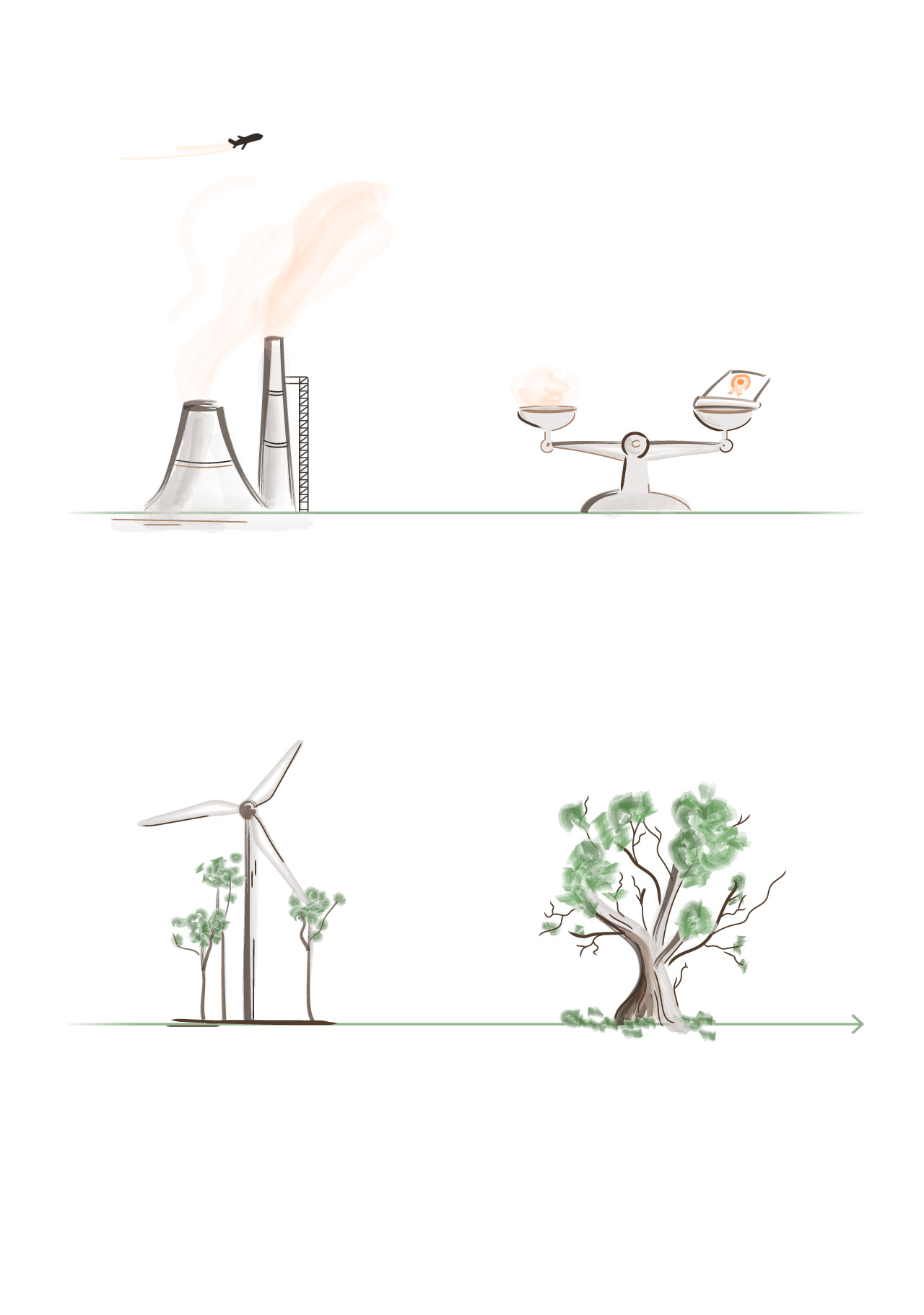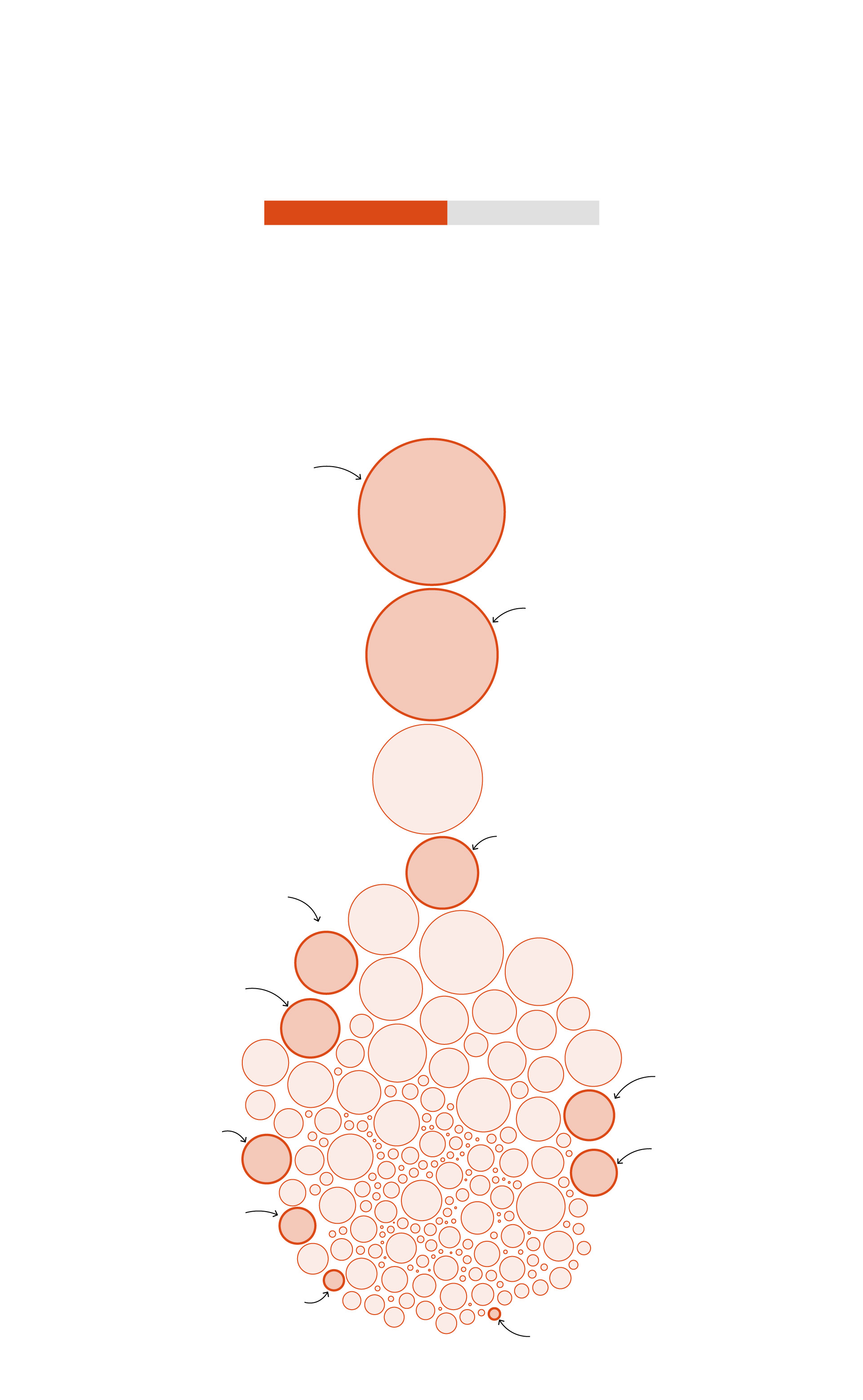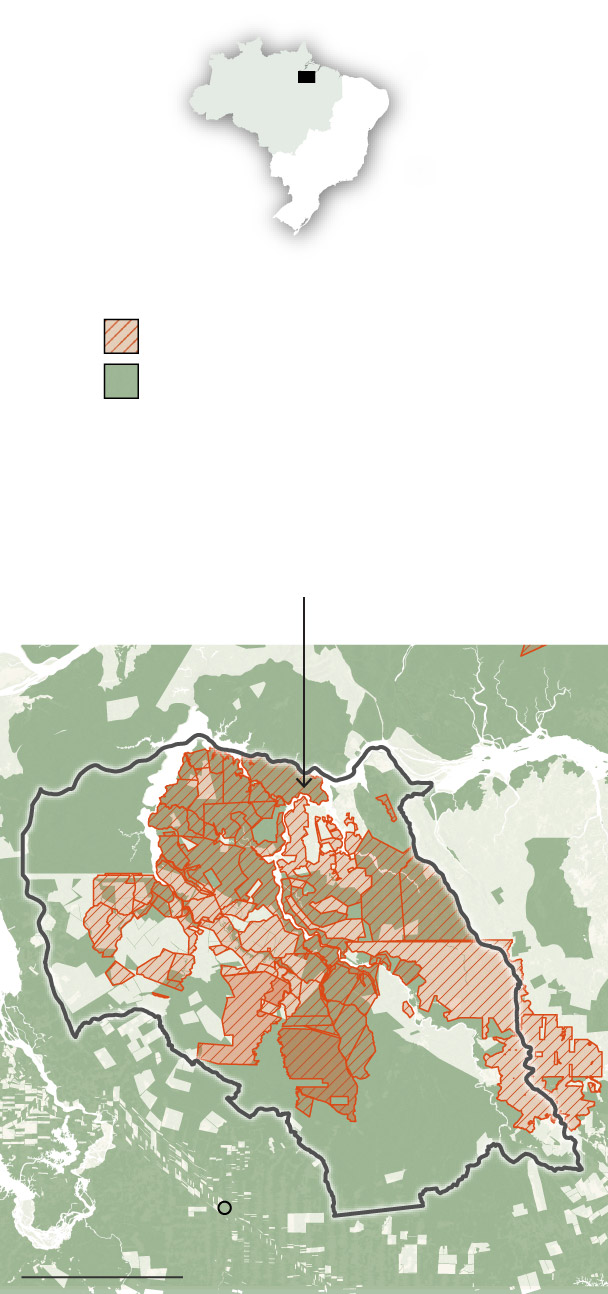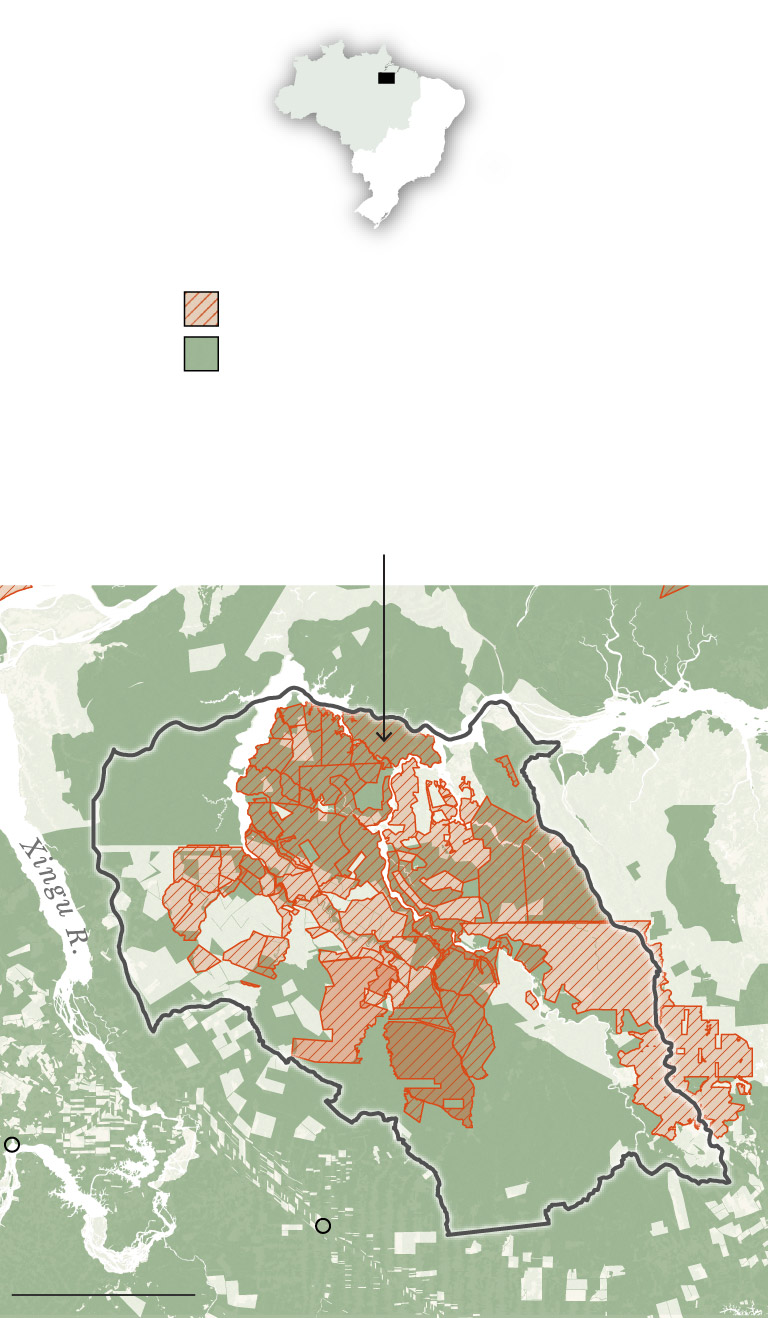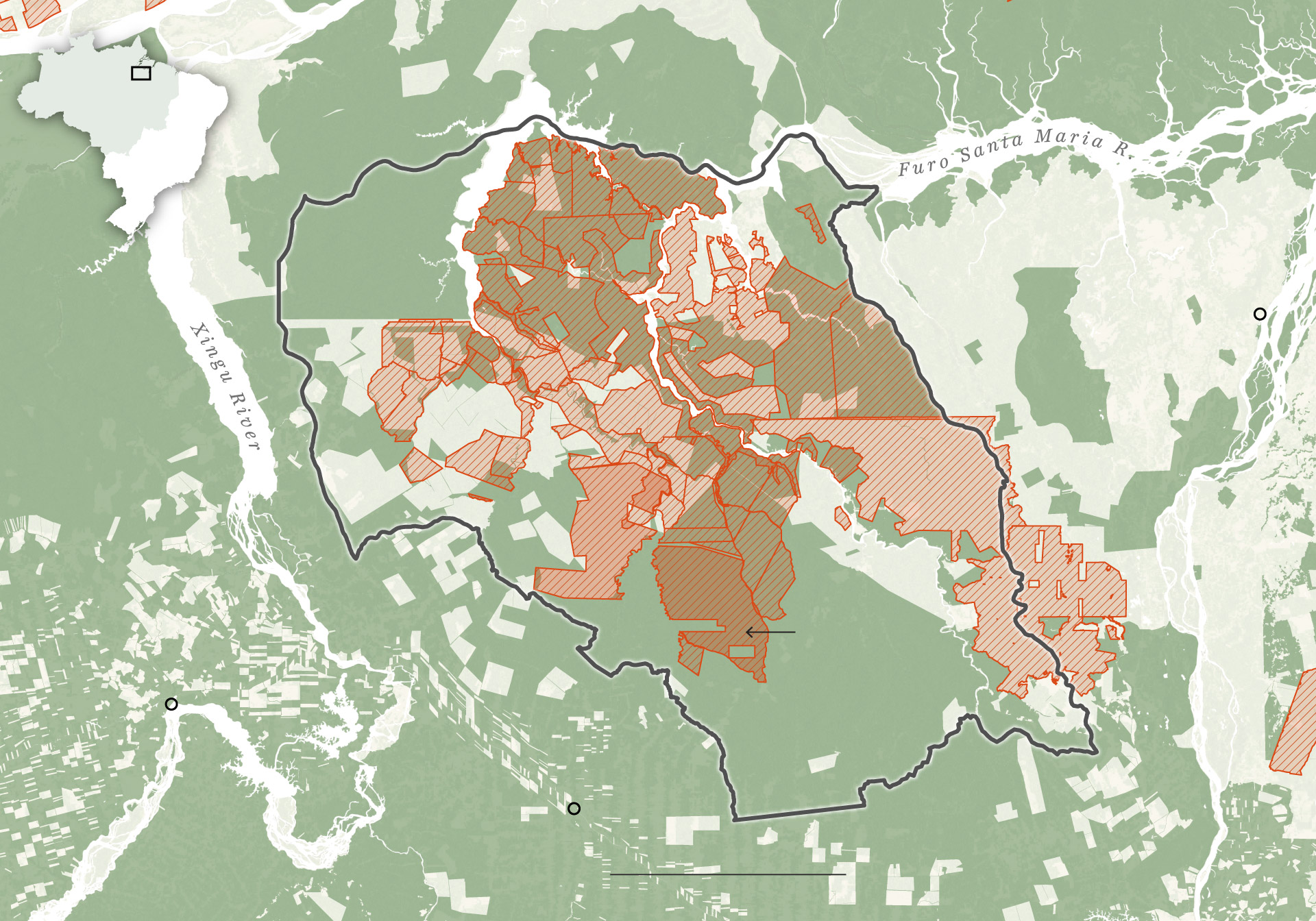
Base map showing the Amazon rainforest
Map highlighting public areas in the Brazilian Amazon
A six-month investigation reveals that many carbon credit ventures reap profits from public lands they have no right to and fail to share revenue with those protecting the forest.
Warning: This graphic requires JavaScript. Please enable JavaScript for the best experience.
July 24, 2024 at 6:00 a.m.
Much of the Brazilian Amazon rainforest is safeguarded behind a green shield of publicly protected land.
In recent years, companies have launched preservation projects in search of a lucrative commodity known as carbon credits.
But a Washington Post investigation found that most of the projects — which have generated tens of millions of dollars — overlapped with public lands.
When added together, the ventures claimed enough public land to cover the state of Maryland — six times.
PORTEL, Brazil — Over the past two decades, a new financial commodity known as carbon credits has become one of the world’s most important tools in the fight against climate change. Companies and organizations seeking to offset their emission of carbon have spent billions of dollars on them.
The Amazon rainforest, because of its size and global environmental importance, has increasingly drawn those pursuing carbon credits. Here, these people are called “carbon cowboys.”
They’ve launched preservation projects across the region, generating carbon credits worth hundreds of millions of dollars. Those credits, in turn, have been purchased by some of the world’s largest corporations. The projects have helped transform the Brazilian Amazon into an epicenter of a largely unaccountable global industry with sales, according to market research, of nearly $11 billion.
But a six-month Washington Post investigation shows that many of the private ventures have repeatedly and, authorities say, illegally laid claim to publicly protected lands, generating enormous profits from territory they have no legal right to and then failing to share the revenue with those who protected or lived on the land. The use of such lands to sell credits also contributes little to reducing carbon emissions.

The frequency with which these projects make use of public property, the amount of land involved and the value of the credits generated have not been previously reported.
The Post found that more than half of all carbon credit forest preservation projects in the Brazilian Amazon overlapped with public territories. The amount of public land claimed by these private ventures was more than 78,000 square miles, six times the size of Maryland. The businesses that purchased the carbon credits from the private land ventures to offset emissions included major international companies: Netflix, Air France, Delta Air Lines, Salesforce, PricewaterhouseCoopers, Airbnb, Takeda Pharmaceutical Co., Boston Consulting Group, Spotify, Boeing.
Diagram explaining how the carbon credit market works
The Post’s investigation is based on a review of thousands of pages of corporate and court records, interviews with dozens of people across the forest, and a geospatial analysis of carbon credit projects in the Amazon. In performing the geospatial analysis — the most extensive to date — The Post compared the boundaries of 101 private preservation projects submitted to the two international certifiers, Verra and Cercarbono, that operate at the center of the global carbon credit marketplace, with government maps of publicly protected areas in the Amazon. (Four ventures were eliminated from the analysis because their map files malfunctioned.)
A majority of the projects are still in line to be certified. But 35 have been certified. And among those, most — 29 — overlapped with public lands. The ventures have so far generated more than 80 million carbon credits, at least 30 million of which have been sold.
It’s unclear how much was made on the initial sales, since detailed transaction information is not publicly available. But their estimated value at the time that purchasers used them to offset emissions was more than $212 million, according to an analysis based on annual market rates.
The Post analysis found no evidence that the purchasers acted improperly. Nine companies identified in this article responded to a request for comment, saying they seek to ensure the carbon credits they purchase are of high quality or that they were reducing their use of credits.
Graphic showing top 200 companies that bought credit credits from projects in public areas, by purchase amounts
In a country without any laws regulating the trade in carbon credits, the private ventures routinely proceed without government review. The Post could identify only two projects that had received government authorization. Asked for comment, several project owners disputed the accuracy of government maps used in The Post’s analysis.
Brazilian authorities are starting to investigate. Three projects were targeted last month by federal police, who issued five arrest warrants and alleged that nearly two dozen companies had conspired to improperly net nearly $35 million in carbon credit sales.
In this opaque global market, some projects earn carbon credits by increasing the use of renewable energies. Others recycle waste or plant trees or improve agricultural practices. But in the Brazilian Amazon, the approach that has been most popular — and profitable — is known as “averted deforestation” ventures. These projects win credits by essentially maintaining the status quo — by preserving forests seen to be at risk.
The Post’s investigation not only exposes failings in the global system for vetting such ventures but also calls into question the value of some projects in addressing global warming. Much of the Brazilian Amazon is safeguarded by a green shield of publicly protected lands: national forests, Indigenous territory, federal and state reserves. But when polluting companies buy credits generated by supposedly preserving land that was already protected, their money contributes next to nothing.
“The system is very gameable,” said Joseph Romm, a climate researcher at the University of Pennsylvania. “And the victim is the planet, and all of humanity who suffers because we’re not reducing emissions, but get to pretend we are.”

Spanning the Amazon
One of the biggest actors in the Amazon’s carbon credit rush is American businessman Michael Greene, a brash Midwesterner given to bold proclamations. “I’m the biggest carbon credit [preservation] project developer in Latin America,” he boasted in a 2022 letter to officials in one Amazon city. “I’m so big that my business is 50 percent of Brazil’s carbon credit market.” On LinkedIn, his company, Agfor, has described itself as the world’s “largest” forest preservation carbon credit developer.
The Post identified 19 projects overseen by Greene and his companies. They all overlapped with public lands either partially or completely, according to The Post’s geospatial analysis. Ten have been certified, winning 45 million carbon credits. The projects have spanned the Amazon, but several have been centered in the impoverished river town of Portel.
(Keuringsdienst van waarde)
Hours from the city’s bustling center, down rivers that run wide and clear, corporate records show that he and his companies have overseen four separate projects that overlapped overwhelmingly with public lands, much of which had been set aside for impoverished river communities. Credits sold by the projects, according to a Post analysis based on carbon credit market rates, had a final value of $87 million.
None of the river people got any money, Brazilian authorities said.
“They robbed from us,” said Maria de Nazaré Oliveira Sousa, 48, who lives on lands granted to her community by the state of Pará.



In response to lawsuits by state authorities alleging that he wrongfully used public land, Greene has denied all improprieties in filings submitted to Pará state court, claimed that the projects have not been profitable and said they have benefited local communities. He canceled a scheduled interview for this article, and he did not respond to a list of detailed questions emailed to him regarding his business practices in the Amazon.
Alleging that disgruntled former employees had provided an inaccurate portrait of his work, Greene issued a blanket denial.
“You are giving Credance [sic] and a platform to groups that want to discredit me and steal my business,” he wrote in an email to The Post. “Everything you have been fed so far is false.”
The world’s testing ground
For proponents, averted deforestation projects provide a market answer to a riddle that long troubled climate activists: how to make conservation profitable. But to critics, the projects are too speculative and too susceptible to exaggeration. How can anyone prove, skeptics ask, that a forest would have been torn down if not for the project?
The world’s testing ground has been the Amazon rainforest, which stores an estimated 123 billion tons of carbon. In 2005, Brazilian climate scientists were among the first to propose the idea of a carbon credit trade as a way to preserve a region that has now lost nearly one-fifth of its forest, often cut down for raising cattle, and is fast approaching what scientists fear is its tipping point.
Despite the global stakes, Brazil has failed to create a national system to regulate the rapid growth in private preservation initiatives. That job has instead fallen to two international registries — Verra, based in Washington, and the Colombian organization Cercarbono — which certify carbon credits for sale even without government approval.
In a statement to The Post, Verra spokesman Joel Finkelstein said determining land ownership in the Amazon can be difficult and the organization has urged third-party auditors, on which Verra relies, to identify any overlap with public lands. It has also suspended several projects, including three in Portel, over allegations of illegal use of public land. “This is the most important forest on the planet that we have to find a way to save,” he said. “We are committed to getting it right.”
Cercarbono said it is the responsibility of third-party auditors to identify irregularities. “Cercarbono does not provide verification services nor is it within our scope,” it said in a statement.
The industry’s reliance on auditors, who are hired by carbon companies and frequently must travel from abroad to assess Amazon projects, has had significant consequences, said Thales West, a Brazilian environmental geographer who worked as an auditor. He said he often witnessed the difficulties foreigners have had in the forest.
“The auditors are from Germany or somewhere else, and they don’t speak any Portuguese, and they fly all the way to the Amazon to do an audit,” West said. “You can see why some certified projects have a lot of problems. … How many thousands of examples of fraud do we have in land deeds in the Amazon?”

An unusual report
West’s question is now at the core of an investigation being led by a Pará state official named Andréia Barreto. Responsible for agrarian cases at the Pará state public defenders’ office, Barreto had once believed she was familiar with just about every type of land dispute in the Amazon. But then in late 2022, an unusual report came across her desk.
The report, written by the environmental human rights organization World Rainforest Movement, told of foreigners pursuing carbon credit deals worth millions of dollars in faraway Portel. Barreto, a cerebral attorney with straight black hair, bought several books about the obscure market, assembled a team of investigators and reserved boat passage to the distant city.
Barreto said she found that Verra had over the past decade approved three large carbon credit projects, despite what appeared to be a significant irregularity. Maps showed the projects areas overlapped with several public tracts, much of which had been set aside in 2012 for local river communities. So Barreto, often working on the case until 10 p.m., tracked down the deeds that appeared to show the lands were private, finding 34 in all.
Inset map showing that several carbon credit projects in Portel overlap with protected areas
What she discovered, she recounted, confirmed her suspicions. Almost none of the deeds were valid. The preservation programs, she said, were built on a lie.
Barreto followed the story of the deeds back to 1990, when a geriatric physician in São Paulo named Jonas Morioka began buying vast tracts of land in Portel. But there was a major problem. After reviewing the deeds, Barreto said Morioka had never received the official authorizations he’d needed for the acquisitions, rendering them invalid.

That didn’t stop several deals from being struck by Morioka in the early 2010s, effectively leasing the lands to carbon credit developers, according to contracts reviewed by The Post.
Morioka did not respond to interview requests or an emailed list of detailed questions. He has previously said he is the rightful, taxpaying owner of the lands. On his personal website, Morioka has denied all allegations of wrongdoing and called himself a “target of defamation.”
Barretto filed four lawsuits naming Morioka and others, alleging theft of public lands. Other state agencies, including the state Institute of Lands of Pará, corroborated her finding in annexed filings. One person appeared to have had a hand in every one of the projects she reviewed.
“Michael Greene,” she said.

Fate of the river people
A hard-charging Midwesterner with barely a sprig of hair, Greene moved to Brazil around 2010 and quickly immersed himself in “complex real estate situations,” according to a biography included with project descriptions. He opened up a real estate brokerage firm specializing in carbon offset projects and, by 2011, was boasting to a Dutch public broadcast journalist that “we know absolutely everything about the laws in the Amazon.”
One of his partners was Morioka, whose land deeds opened up an opportunity to do large-scale carbon credit preservation projects in Portel.
Portel was described in reports associated with Greene’s projects as “a backwater mafia-lead [sic] city” where a cabal of illegal loggers, corrupt politicians and labor unions were destroying the forest and imprisoning thousands of poor river dwellers in a system of “oppression.” One of the few resisting, in Greene’s telling, was Greene. “If I stop, Portel is basically finished,” he told the Intercept Brasil in 2022.
The projects, according to reports submitted to Verra, had dispatched river scouts to surveil the forest and report illegal loggers to environmental authorities, and were helping impoverished river people resist loggers seeking to displace them. “We have saved innumerable river people from being killed and stripped of their land by illegal loggers,” reported his company’s website.
But a review of public records and academic research, a visit to the project areas, and interviews with 40 people familiar with the region or projects, including 16 of Greene’s current and former employees, offered a different picture.
The threat of widespread destruction and rampant violent crime was largely exaggerated, according to crime and deforestation data. None of those queried — including police officials, politicians, environmental authorities, community leaders and former employees — could confirm that projects ever conducted regular surveillance.
“There was never any patrolling,” said Sergio Gibson, an employee credited in project reports as having coordinated the surveillance.
Former employees, many of whom spoke on the condition of anonymity out of fear of being associated with the projects or reprisals by Greene, accused the American businessman of fictionalizing Portel’s security situation, inflating the projects’ social impacts and brushing off their concerns over irregularities.

Heitor Gama, a Brazilian anthropologist, said he spent a month on Portel’s rivers, where he quickly began to question whether the programs were authentic. Reports submitted by the company to Verra and publicly available on its database had repeatedly asserted that the projects were bringing land tenure to the rural poor. But no one got property rights, he said, just a document that said they’d been entered into an agrarian registry. Most people Gama said he encountered had never heard of the preservation programs.
In January 2020, Gama filed a complaint with Verra.
“Tons of carbon credit is being sold in an area that belongs to traditional communities without them even knowing about it,” he said in the email. “Take a look at the information available in the project reports. … We notice the volume of fake information that these reports contain.”
A Verra spokesman said a review of the project is ongoing and that the organization takes complaints and grievances seriously.
Undeterred, Greene launched his boldest initiative yet.

An aggressive campaign
In the southern Amazon forest, in a large Indigenous territory in the municipality of Juína, discontent was spreading among the Cinta Larga people. A company named Indigenous Carbon had come to their villages to see if they wanted to make a deal to sell carbon credits. As time went on, concerns grew.
In two letters sent to federal attorneys late last year, Cinta Larga leaders pleaded for help and warned that Indigenous Carbon and its owner, Michael Greene, had sidelined the government agency charged with protecting Indigenous rights. “Consider this document an extremely grave denunciation,” said one of the complaints, signed by 10 Indigenous leaders, “of something that harms our rights.”
The push into Cinta Larga territory was part of an aggressive campaign across the Amazon. In 2022, Indigenous Carbon filed 18 project descriptions to the registry Cercarbono, according to the certifier’s project database, including seven on Cinta Larga lands. The ventures were big, asserting they were protecting more than 22,000 square miles of Indigenous land.
And, according to federal government attorneys who met earlier this year to review such projects, they were also invalid.
In the absence of government approval, companies like Greene’s have no right to carbon credits associated with Indigenous territories, and the residents themselves have no legal right to sell them or give them away, according to Brazil’s Federal Public Ministry. Such deals could open traditional communities to predation, federal attorneys said in a March meeting, and were void without government authorization.
“These contracts are illegal,” Daniel Luis Dalberto, a federal attorney helping lead the public ministry’s inquiry. “They are excluding public agencies, which can’t be left on the outside of this.”
Funai, the government’s Indigenous affairs agency, announced last year that the federal government, lacking a system of regulation, could not authorize deals involving Indigenous lands.
Still, Indigenous Carbon proceeded, reaping a windfall of carbon credits. And it did so by telling Cercarbono that the ventures had been the villagers’ idea. Greene’s company was only a consultant. But six former employees said Indigenous Carbon had been far more than a consultant — entering the territories, paying leaders to participate in unauthorized carbon credit deals and then seeking to conceal the company’s involvement.
“Have the leaders tell their people that they sought a company and contracted it to consult them on how to do the project,” Greene wrote to one employee in June 2022 in one of several WhatsApp messages reviewed by The Post. “Not that they were approached.”
“They need to say, ‘We did the project, without the help of a white man coming to our land,’” he wrote in another message in December 2022.
By late last year, an Indian firm hired by Greene verified six of the projects. Cercarbono then certified them all. They were allotted roughly 24 million credits, records show, worth $197 million at last year’s prices.
Valdomiro Cinta Larga, who leads a territory where one of the projects is based, said his people had made “very little” from the deal. Only about $4,000.

The credits keep selling
In late 2022, the Portel preservation projects burst into public view.
First came the World Rainforest Movement report, then Barreto’s lawsuits, which are still pending. State and federal police opened criminal investigations, which are ongoing, according to police records and interviews. And finally, in September 2023, Verra suspended the projects to investigate unspecified “stakeholder comments” and barred the projects from acquiring additional credits to sell.
In comments to the carbon credit trade publication Quantum Commodity Intelligence, Greene portrayed himself as a victim. He said corrupt officials and criminals resented him for the good he said he’d done in Portel to help its “oppressed population,” including the distribution of cookstoves and the construction of wells and schools.
“You’re changing the status quo; they don’t like it,” Greene told the publication. “They want the population to be poor, they want them to be uneducated.”
But some villagers said they received nothing except but a small cookstove, which none of them said they used. Others said they had been tricked, persuaded to sign contracts that forfeited traditional livelihoods safeguarded on their lands — such as sustainable logging — on the false promise of land ownership.
“People thought they were becoming owners and were left with nothing, not even the right to do what they’d done before,” said Marivaldo Pereira de Oliveira, 48.
Despite the complaints and lawsuits, international buyers have continued to use the projects’ credits to offset their pollution, according to Verra’s registry.
This year alone, records show, more than 733,000 credits have been used. By a carbon credit broker that works with Netflix, Microsoft and PwC. An artisanal coffee wholesaler. A British freight company.
The world was heating up. And for the carbon cowboys, so was the market potential.
“Rising interest from buyers,” Quantum reported in March. The price of credits associated with one of the Portel ventures “assessed at a two-month high.”
About this story
Cecília do Lago in São Paulo contributed to this report. Editing by Alan Sipress. Graphics editing by Samuel Granados. Photo editing by Jennifer Samuel. Video editing by Jon Gerberg.
Methodology
To identify carbon credit projects that overlap with public land, The Post compared the boundaries of 101 carbon credit preservation projects in the Amazon with government maps of public territories. Those lands included Indigenous territories, conservation reserves, national forests, public settlements for peoples of the forest, and lands set aside for descendants of enslaved Africans. The Post also included territories declared public lands by state and federal authorities. The territories, known as “glebas,” can include private properties. The Post subtracted all that were recognized by government authorities.
Sources
Boundaries for the carbon credit projects are from Verra and Cercarbono. Data on preserved areas and public parks is from the national registry of conservation areas. Indigenous territories are from Funai, the Indigenous affairs agency. Boundaries for enclaves of descendants of enslaved Africans are from Brazil’s 2022 census. Data on “glebas” are from state and federal agrarian authorities. National forests are from the federal registry of national forests. The Amazon’s transnational limits are from the Amazon Network of Georeferenced Socio-Environmental Information, and the region’s boundaries in Brazil are from Brazil’s National Institute for Space Research (INPE). Data on credits purchased by companies and individuals is from Verra.
Files for carbon credit projects were downloaded in December. All the public land files were downloaded in June.



